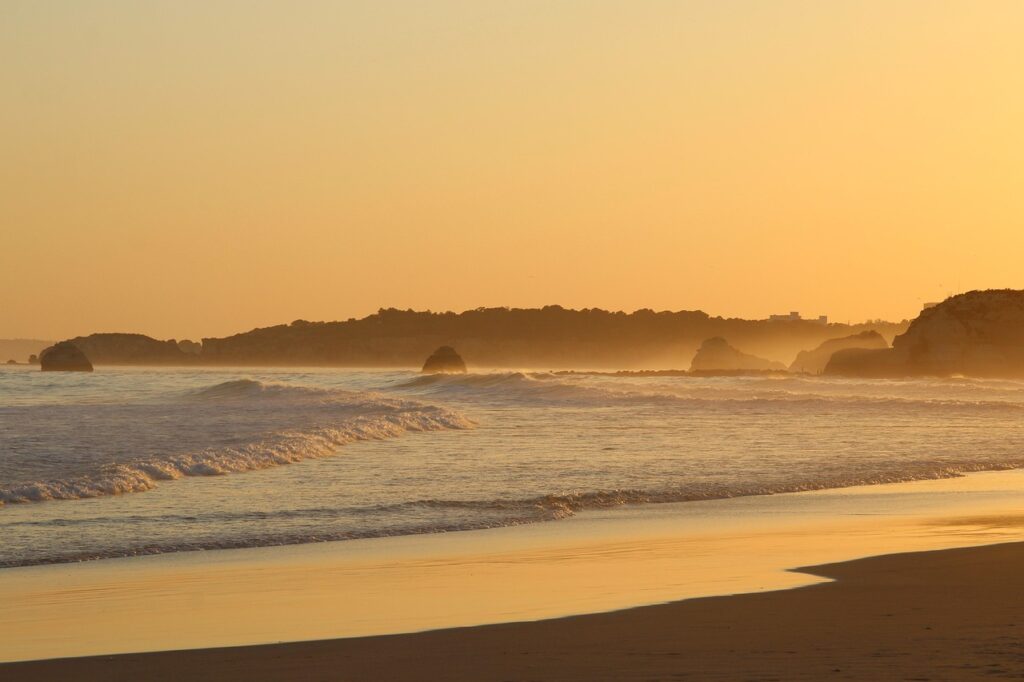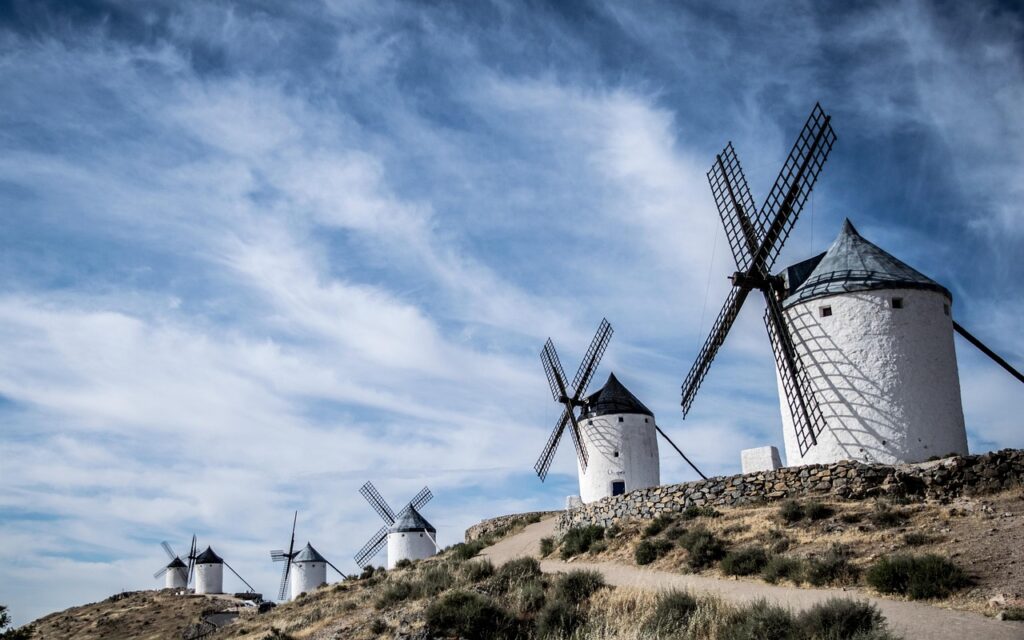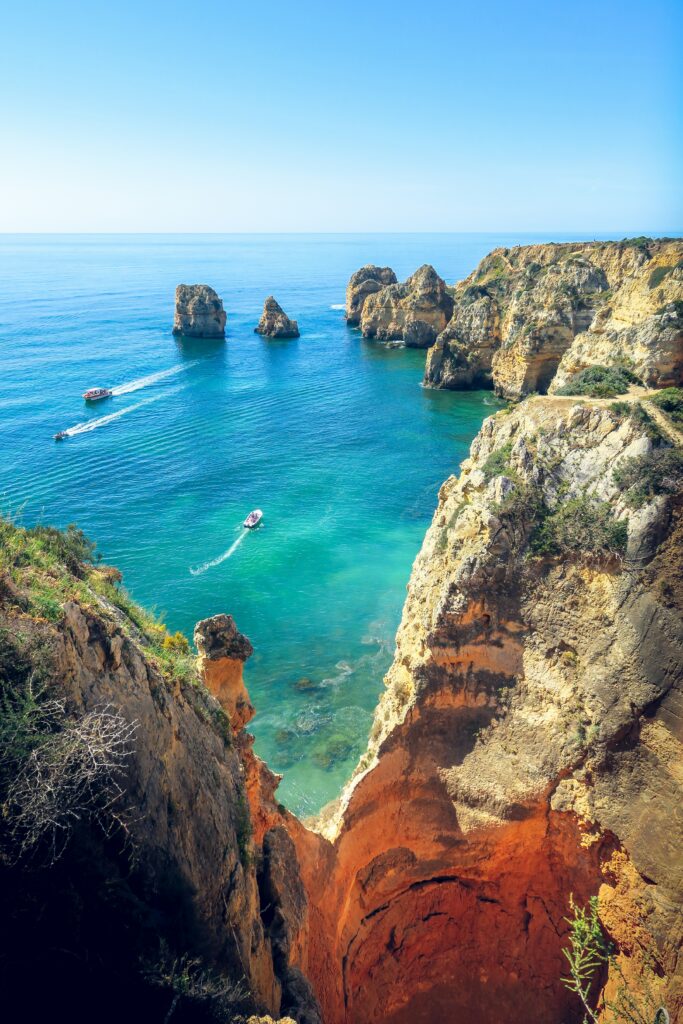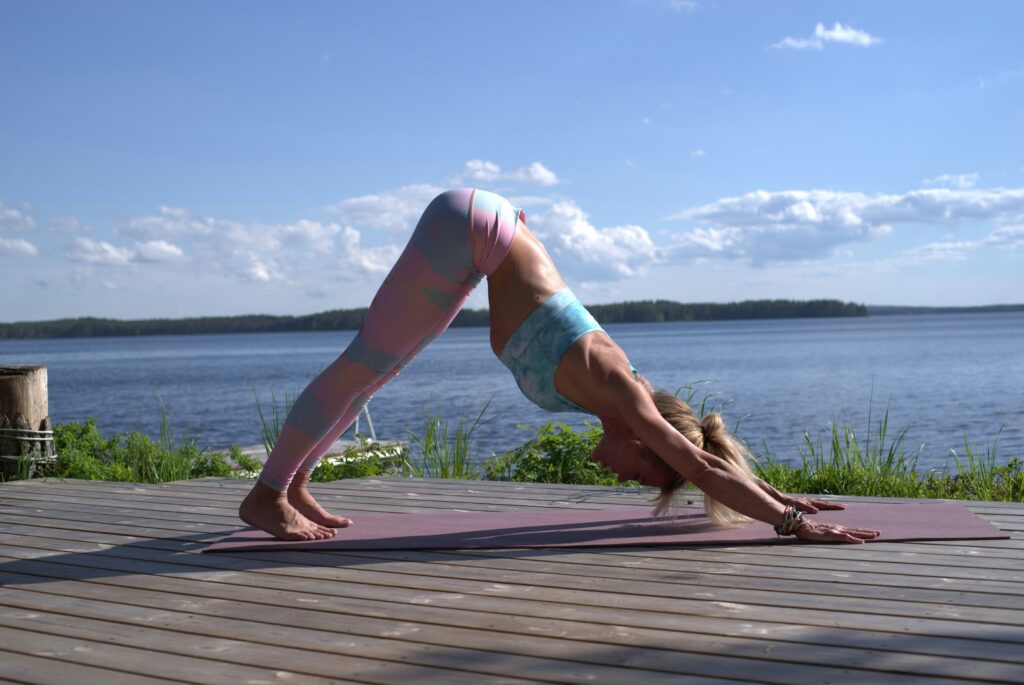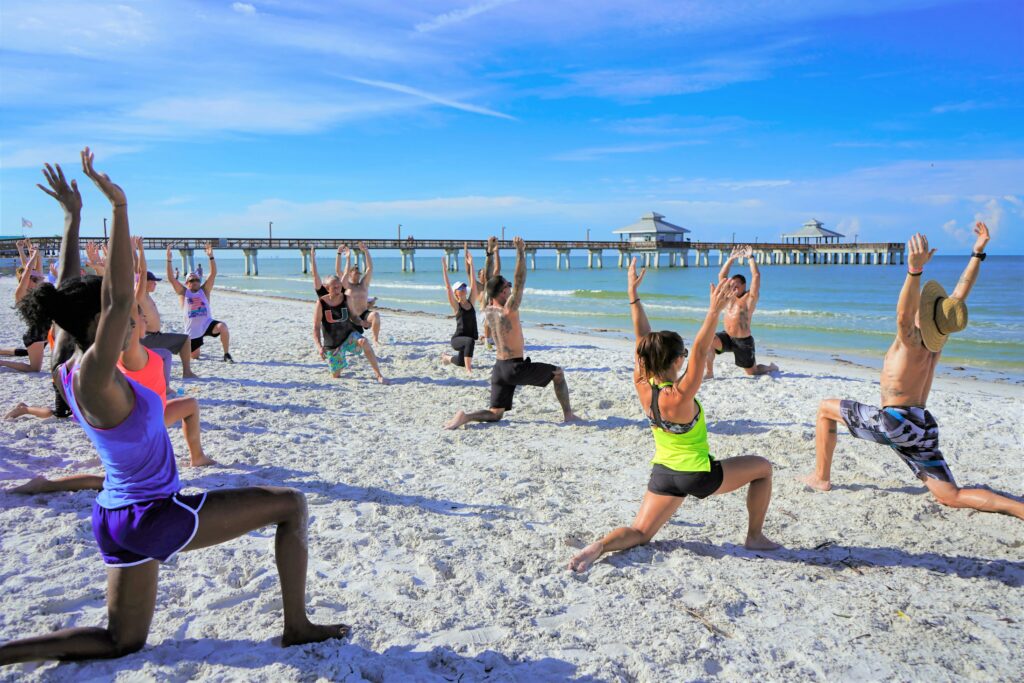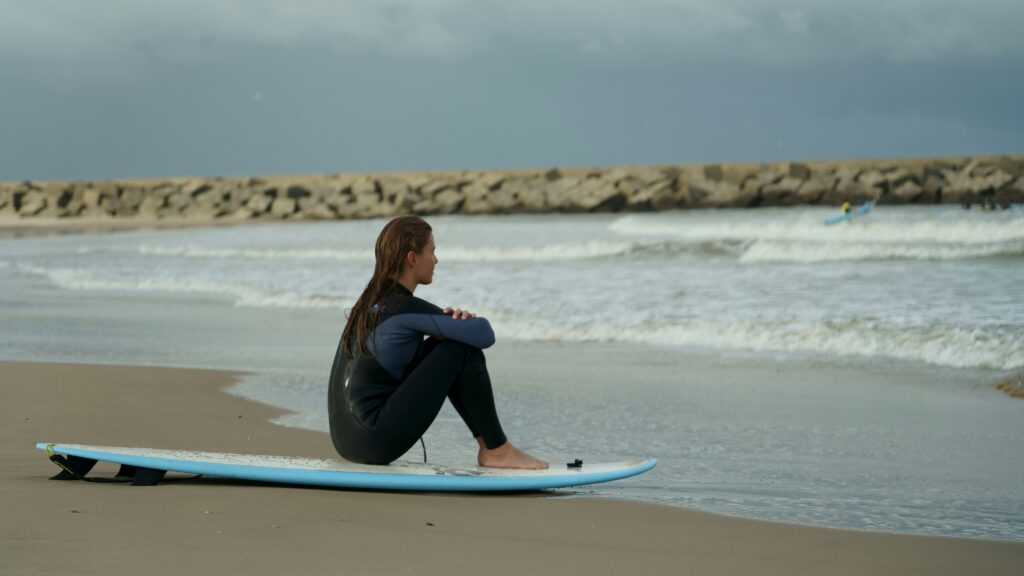Tucked between Tuscany, Lazio, and Le Marche, Umbria is Italy’s only landlocked region — a patchwork of olive groves, forested hills, and medieval hill towns that feel frozen in time.
Where Tuscany dazzles, Umbria whispers. Its pace is slower, its landscapes more rugged, and its silence more complete.
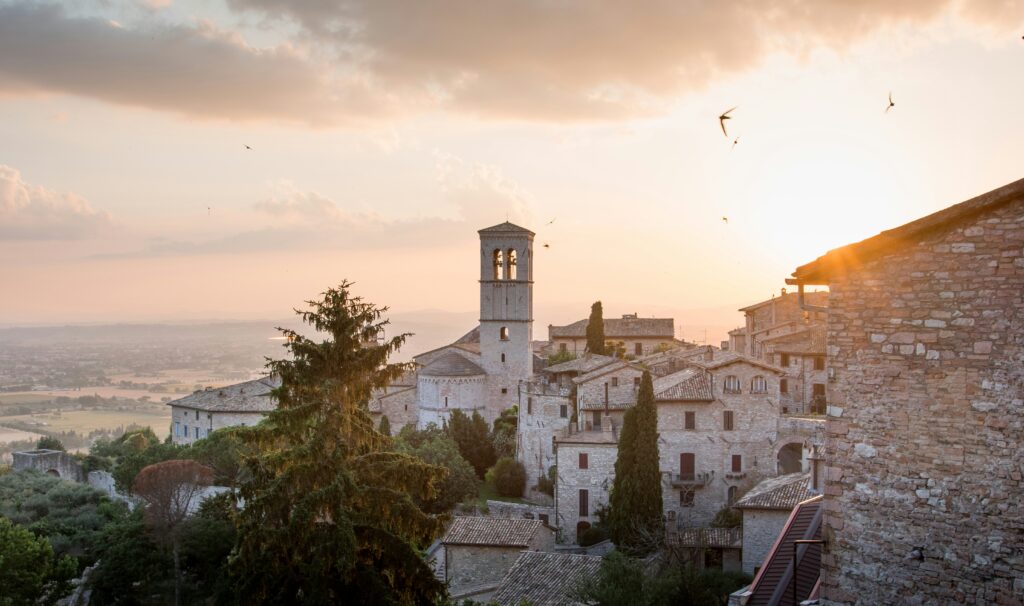
For travellers seeking peace, reflection, and authentic local life, this is one of Italy’s most underrated destinations for yoga and wellness retreats.
Many retreat centres are set in restored monasteries or eco-farmhouses, where days follow a rhythm of morning practice, healthy meals, and time spent walking, journaling, or exploring the surrounding countryside.
In Umbria, the idea of “wellness” extends far beyond the mat — it’s in the food, the architecture, the simplicity of life itself.
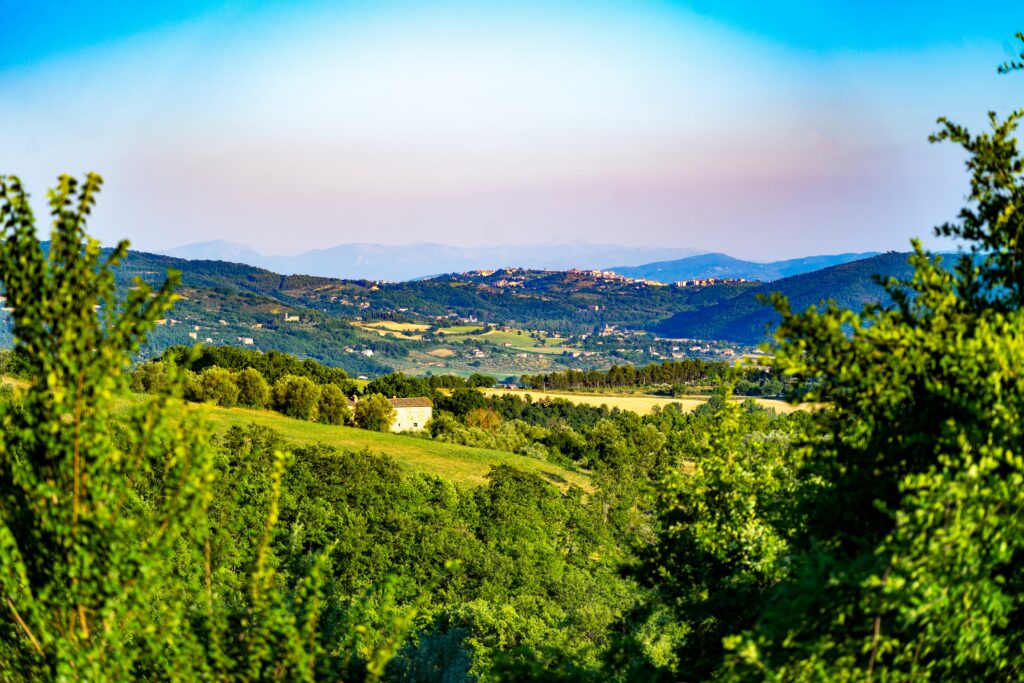
The Mood of the Land
Umbria’s nickname — Il Cuore Verde d’Italia (the Green Heart of Italy) — isn’t just about its geography.
It’s also about how alive the land feels.
Between Perugia and Spoleto stretch endless waves of olive trees, chestnut woods, and vineyards.
Villages cling to hillsides, their stone houses turning honey-gold at sunset.
There’s a spiritual quiet here — not solemn, but deeply grounding — inherited from Saint Francis of Assisi, whose message of peace still seems to echo through the valleys.
You’ll notice it in the air: a stillness that invites introspection.
It’s no coincidence that so many retreats in Umbria combine yoga with meditation, writing, or spiritual workshops. The region lends itself to inner work.
When to Go
- Spring (April–June): The countryside is at its most vibrant, with wildflowers and cool mornings perfect for outdoor practice. Temperatures range between 15–25 °C.
Ideal for gentle hiking and farm-based retreats. - Summer (July–August): Expect long, warm days and lively village festivals. Afternoons can reach 30 °C, so retreats usually shift yoga sessions to early mornings and evenings.
- Autumn (September–October): The harvest season. Vineyards and olive groves come alive, truffle markets fill small squares, and the light softens into gold.
It’s the most atmospheric time to visit and a favourite among repeat retreat-goers. - Winter (November–March): Cold but deeply peaceful. Perfect for restorative, silent, or study-based retreats held indoors by the fire. Snow occasionally dusts the higher hills.
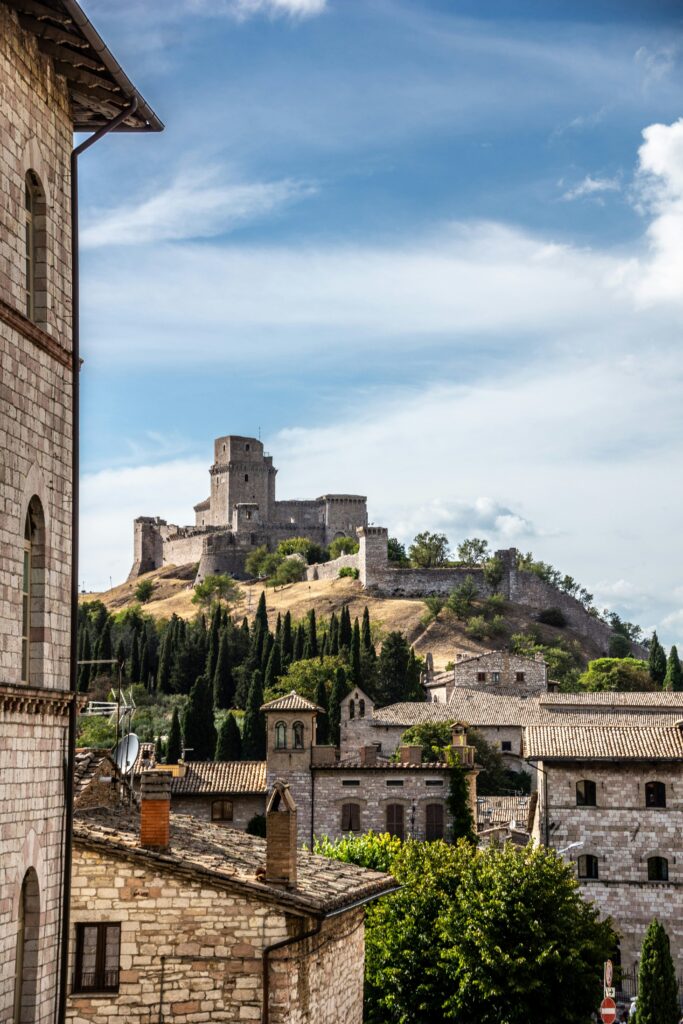
How to Get There
By Air:
- Perugia San Francesco d’Assisi Airport (PEG) connects to London, Brussels, Vienna, and domestic hubs like Milan or Catania.
- Many travellers fly into Rome Fiumicino (FCO) or Ciampino (CIA) and continue by train (around 2 hours to Perugia or Assisi).
By Train:
Regional trains run between Rome, Florence, and Umbria’s main towns: Perugia, Assisi, Spoleto, Orvieto, and Terni.
They’re comfortable but slow — budget time for scenic travel.
By Car:
A rental car offers full freedom. Winding country roads lead to monasteries, vineyards, and hidden retreat locations.
Driving here is calm compared to Tuscany’s tourist routes; parking is free in most rural areas.
Getting Around:
Public transport between villages is limited, so check if your retreat offers transfers.
Cycling and e-bikes are increasingly popular, especially around Lake Trasimeno and Valnerina.
What to Eat & Drink
Umbria’s cuisine is simple, earthy, and tied to the land — ideal for yoga and wellness travellers who prefer clean, nourishing food without losing flavour.
Signature Dishes:
- Zuppa di lenticchie di Castelluccio — lentil soup from the Monti Sibillini plateau, rich in protein and comfort.
- Strangozzi al tartufo nero — handmade pasta with black truffle, a regional delicacy.
- Torta al testo — a rustic flatbread filled with grilled vegetables or pecorino cheese.
- Fagiolina del Trasimeno — small heirloom beans cultivated near the lake.
Olive Oil & Wine:
Umbria produces some of Italy’s most prized olive oils, especially from Trevi and Spello.
Wine lovers will enjoy Sagrantino di Montefalco, a bold red with meditative depth, and crisp Grechetto whites for summer.
Retreat Menus:
Most wellness retreats in Umbria offer vegetarian or Mediterranean-inspired meals sourced from on-site gardens or neighbouring farms.
Food here isn’t about restriction — it’s about rhythm: eating slowly, in season, and with gratitude.
What to See & Do
Assisi: Spiritual Stillness
The birthplace of Saint Francis, Assisi is the region’s spiritual heart.
Visit the Basilica di San Francesco, filled with Giotto’s frescoes, and hike to the Eremo delle Carceri, a forest hermitage once used for silent prayer.
Even if you’re not religious, the calm here is tangible — it feels like walking inside peace itself.
Perugia: Art, Chocolate & Culture
The capital combines medieval architecture with a young, creative energy from its university.
Don’t miss the Rocca Paolina fortress, Galleria Nazionale dell’Umbria, and the famous Eurochocolate Festival in October.
Ideal for a pre- or post-retreat city stop.
Spoleto & Orvieto
Spoleto hosts an annual festival blending art, dance, and spirituality.
Orvieto sits dramatically atop volcanic tufa rock, its cathedral among Italy’s most beautiful.
Both towns offer that rare mix of culture and calm.
Nature Escapes
- Lake Trasimeno: Soft hills, olive groves, and island ferries — a serene day trip.
- Valnerina: Waterfalls, truffle forests, and quiet stone villages.
- Monti Sibillini National Park: For those who love hiking or mindful walks among peaks and wildflowers.
Why Umbria Works for Yoga & Wellness
- Silence: Unlike more touristic regions, Umbria offers uninterrupted quiet — essential for inner work.
- Spiritual Heritage: The Franciscan ethos of simplicity and kindness still shapes local life.
- Accessible but Remote: Close to Rome and Florence, yet untouched by mass tourism.
- Sustainability: Many retreat centres use solar energy, organic farming, and slow-living principles.
- Local Connection: Retreat leaders often collaborate with small producers, creating meaningful, community-based experiences.
This mix of tranquillity, spirituality, and authenticity makes Umbria one of Europe’s most holistic destinations for personal renewal.
Practical Tips
- What to Pack: Layers for changing temperatures, comfortable shoes for hilly terrain, and a journal — you’ll want to write here.
- Language: English is widely understood at retreats, but basic Italian greetings (buongiorno, grazie) go a long way.
- Pace of Life: Expect shops and restaurants to close mid-afternoon. Embrace it — rest is part of the rhythm.
- Events to Note:
- Calendimaggio in Assisi (May) — medieval music and flower parades.
- Umbria Jazz in Perugia (July).
- Frantoi Aperti (Oct–Nov) — open olive mills and tastings.
Final Reflection
In Umbria, the retreat experience doesn’t end when the class does.
It continues in the way locals move — unhurried, kind, attentive.
It’s in the taste of olive oil pressed the week before, the echo of church bells in the distance, and the silence that feels not empty but full.
This is not the Italy of postcards but of presence — and that’s what makes yoga retreats in Umbria unforgettable:
they teach you to slow down until the world becomes audible again.

